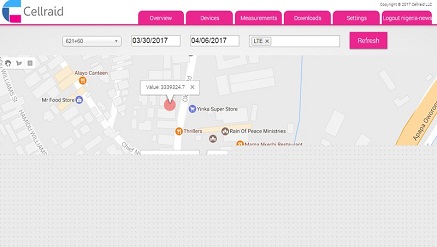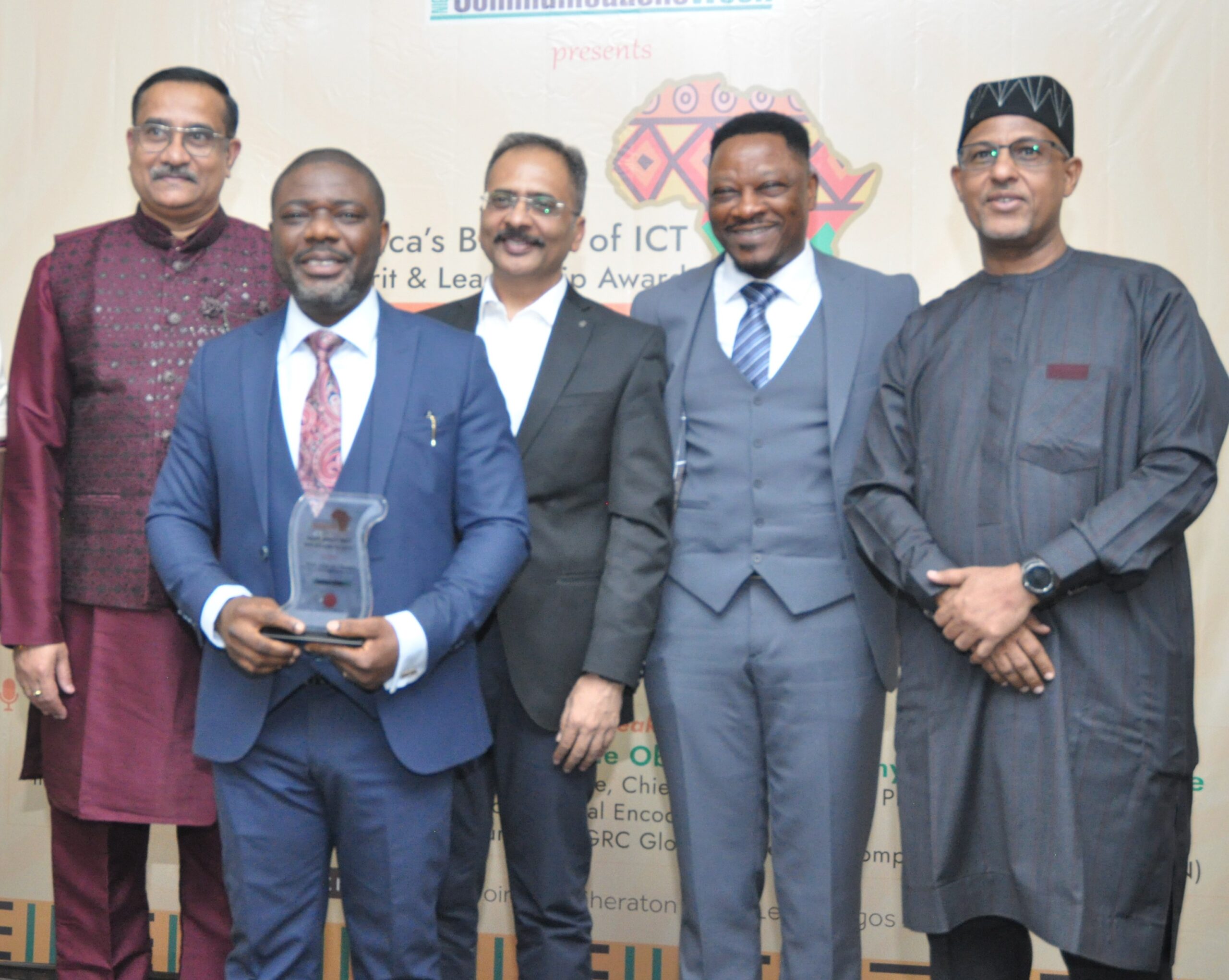Telecom
Quanta Monitor Can Now Tell Level of Radiation from Your Cellphone

Cellphone Radiation (CR) in a very hot topic multi-billion-dollar smartphone industry do not like to talk about, however, the issue is existing and now telecom regulators, operators and big public can start to use an innovation, and be aware about the level the radiation, and take some actions accordingly.
Obviously, there are growing concerns that electromagnetic radiation from one’s cellphone is absorbed by the head and body.
Exposure to such radio frequency energy has the potential to cause cancer, as indicated by the World Health Organization (WHO) since 2011.
Young, growing children, many of which are becoming addicted to social media and games have been identified as most vulnerable to the potentially damaging effects of cellphone radiation.
Thus, a Finnish startup- Cellraid, has taken up the challenge by developing unique applications to measure, monitor and also reduce exposure to cellphone radiation.
According to health experts, cell phones emit radiofrequency energy (radio waves), a form of non-ionizing radiation, from their antennas, but now, Cellraid is saying it is only small part of the radiation you should actively worry about.
Pasi Ala-Mieto, CEO Cellraid in a chat with Nigeria CommunicationsWeek, said they are quite concerned about the high level of exposure to radiation coming from cellphones hence they developed the world’s first apps for measuring mobile phone radiation.
Quanta Monitor is a free Android app that measures the SAR (Specific Absorption Rate) output, power density, and cumulative exposure to radiofrequency emissions from your phone.
Quanta Guard takes things a step further by automatically cutting off your data connection if safe SAR limits are exceeded. “We tried both apps out to see how they work and learn just how much radiation we’re exposed to on a daily basis,” he said.
Pasi Ala-Mieto states further, “Our development is good news for, not only the 5 billion cellphone users, but also telecom operators, phone manufacturers and telecom authorities, all of which have the potential to benefit from our ability to make cellphone use less risky, especially the increasing number of very young users of smartphones.”
Researches
Recently, scientists engaged in the study of biological and health effects of non-ionizing electromagnetic fields (EMF) raised fresh alarm based on their peer-reviewed, published research.
The scientists said they have serious concerns regarding the ubiquitous and increasing exposure to EMF generated by electric and wireless devices.
According to a report by guardian.ng, these include–but are not limited to–radiofrequency radiation (RFR) emitting devices, such as cellular and cordless phones and their base stations, Wi-Fi, broadcast antennas, smart meters, and baby monitors as well as electric devices and infra-structures used in the delivery of electricity that generate extremely-low frequency electromagnetic field (ELF EMF).
The scientists were joined by Professor of Radiation & Health Physics, Ladoke Akintola University of Technology, Ogbomoso, Oyo State; and Dr.Idowu Ayisat Obe, Department of Zoology, Faculty of Science, University of Lagos, Akoka, Lagos State.
Nigeria CommunicationsWeek found that the concerns over cell phones and other wireless devices prompted Toronto’s Department of Public Health to warn teenagers and young children to limit their use of cell phones.
The International Commission on Non-Ionizing Radiation Protection (ICNIRP) established in 1998 the “Guidelines For Limiting Exposure To Time-Varying Electric, Magnetic, and Electromagnetic Fields (up to 300 GHz)”. The WHO and numerous countries around the world accept these guidelines.
The WHO has also called for all nations to adopt the ICNIRP guidelines to encourage international harmonization of standards.
Nigerian Government’s Position
But, the Nigerian Communications Commission (NCC) has consistently refuted claims about telecoms equipment posing health hazards to the public. Though, the industry regulator has limited the discussions to telecom masts and towers, efforts to get the views of other industry player proved abortive as they were sceptical about commenting on the subject.
The Commission has severally relaxed the tension over the speculated health hazards that may arise as a result of erecting telecommunication masts near residential areas.
According to NCC, no research whatever had proved that Radio Frequency Exposure could enhance the possibility of contracting any disease.
They maintained that masts were not hazardous, saying that such fear was no scientific backup and urged participants at the event to pay less attention to such speculation and think more on how to move the industry forward.
How Cellphone Radiation Occurs
The CEO of Cellraid explains further “There are 5B phones causing non-necessary ‘extra radiation’ which means very fast battery consumption, which again means needs to burn coil, to charge these phones again. So far there is no institution which is really monitoring the RF exposure levels.
“Now when little kids are using their smartphones 24/7, phones in their pockets, data always on, and phone 0-10mm distance from their body hours, every day..and night…the 20 years old regulations to control SAR & power density (radiation levels) are not updated to face the real use of smartphones. Old regulation still suppose that the phone is at 15mm distance from the skull and only for voice talks, even the phone is on hand, pocket or close to body, rather than on the ear.
“We have developed Quanta Pro, that is for telecom operators and regulators to make RF Exposure measurements from the user perspective, to ensure that their operations are respecting the set limits. We are monitoring both uplink (phone), downlink (base station antennas) and additionally also wifi – just like the user is experiencing the ‘radiation’.
“In addition, we have developed solution for the consumers too; As, our technology is noting when the phone is close to body, head or hand, it can monitor the SAR level on real-time, and also limit the exposure levels, when certain thresholds are exceeded”.
How Quanta Operates
The solution, Quanta Pro, measures RF exposure level of the user in the field, streets, buildings, homes and places of work. The software runs on any Android device. It provides a low cost measurement solution for Telecom Authorities and Operators to identify high RF Exposure locations.
Quanta Pro is able to measure the combined level of radiation from the cellphone, network antennas and even Wi-Fi. At present network operators only measure radiation from network antennas (downlink). However, the main source of RF is the phone itself, which represents 99,9989% of all exposure.
“The strange thing is that telecom authorities and operators are focusing today on antennas that represent only 0,001% of the exposure”, CEO Ala-Mieto said. “I believe that soon every operator will measure the total level of RF exposure. And a real opportunity arises, when they compete to be “the healthiest choice” for their customers.
In addition, the company has developed Quanta Monitor, which is a free app for consumers, to monitor personal RF exposure levels, in real-time.“At last the user is able to know more about their own level of exposure to radio frequencies, at home and work, Quanta Monitor gives them the ability to compare networks, and keep a history of their accumulated exposure.”
Quanta Monitor and Quanta Guard are available in the Google Play Store for Android phones.
“We look forward co-operating with cellphone manufacturers like Apple and Samsung, as well as telecom operators and authorities”, said CEO Ala-Mieto respectfully and with the goal of “making all our communication life better”.
Telecom
Glo, Huawei, Communications Ministry Bring Digital Services to Abuja Village

Telecommunications and digital services provider, Globacom, has partnered with the Federal Ministry of Communications, Innovation and Digital Economy and Huawei Nigerian Enterprises, to provide digital access to 7,000 remote communities in Nigeria with the commissioning of the pilot project in Isuanin Kura in Ibwa 2, Gwagwalada, on the outskirts of the Federal Capital Territory, Abuja on Wednesday.

The project, which is championed by the Ministry, will deliver 2G/3G/4G services, free public Wi-Fi access, digital healthcare and remote learning capabilities to the over 12,000 residents of the community.
Minister of Communications, Innovation and Digital Economy, Dr. Bosun Tijani, was full of commendation to Globacom and Huawei for supporting President Bola Tinubu’s commitment to addressing the connectivity crisis affecting more than 20 million Nigerians who currently lack basic telecommunication access in the country.
Said he: “If you bring out your phone in many communities, there is no network at all. This is costing the country significantly because people cannot access financial services, medical care, or education”, adding that this also poses governance challenges as disconnected areas are difficult to administer.
“Where you live should not determine your access to opportunity. We are using innovation to ensure every Nigerian, regardless of location, can thrive in the digital age”, the Minister added.
Globacom’s Group Chief Technical Director, Mr. Sanjib Roy, who spoke on the project said the company worked with the Ministry and Huawei to bring up the site by providing the Microwave backhaul link and access to Globacom’s full core network resources and also manage the operation of the site to ensure uninterrupted voice and data services for the community.
“The Smart Education facility allows for young students within the community to receive education remotely, with the teachers being in Abuja or any other part of the world, while Healthcare delivery has been revolutionised through connected medical equipment that enables remote consultations between patients in Ibwa and doctors and specialists in urban-locations”, Mr Roy explained. The site and all the equipment are powered by solar thereby ensuring clean environment and uninterrupted power supply.
During the inauguration, the system’s effectiveness was demonstrated with the leader of Isuanin Kura, Ibwa 2 Community, Chief Abubakar Bamaiyi, having a live consultation with a medical doctor in Abuja, while the Minister and other guests watched as the students in the local school were being taught via online video by a teacher in Lagos, using equipment provided by Huawei.
Mr Kazeem Kaka, Globacom’s Head of Division, North West, who also spoke at event, said, “For Globacom, this is a continuation of our long-standing mission to democratize access to communication. Since 2003, we have remained at the forefront of efforts to lower the barriers to connectivity—making telephony, internet, and data services more accessible and affordable for all Nigerians.
“Today’s launch reinforces that commitment. We are particularly excited about the impact this initiative will have on education, healthcare, and economic empowerment of Ibwa people”.
In his remarks, Mr Terrens Wu, Managing Director, Huawei Nigerian Enterprises, said his company was proud to be part of the initiative to provide connectivity, and promote learning and healthcare in rural communities through digital technology. His company later gave out 120 affordable smartphones to the community to help them have access to telephony.
Telecom
NIMC Targets 95% National ID Enrollment by December 2025

National Identity Management Commission (NIMC) has unveiled an ambitious plan to register at least 95% of Nigerians into the National Identity Database before the end of 2025, aligning with President Bola Tinubu’s Renewed Hope Agenda on digital governance and inclusive development.

Speaking at a media briefing in Abuja, NIMC Director-General Abisoye Coker-Odusote outlined the agency’s strategy, which includes expanded registration centers, improved infrastructure, and intensified public sensitization campaigns.
“As part of our efforts, we are launching the Ward Enrollment Exercise to ensure that at least 95% of Nigerians are captured by December,” she stated.
NIMC reported that over 120 million Nigerians have already been enrolled, with the target set to register an additional 100 million before year-end. Coker-Odusote emphasized that the exercise would provide the government with accurate population data, enabling better planning and resource allocation.
Addressing concerns about data security and public trust, the NIMC boss assured Nigerians that robust measures have been put in place to safeguard personal information.
She highlighted initiatives such as the NIN Authentication system, which allows individuals to control access to their data through user consent management.
Additionally, NIMC is collaborating with security agencies to track and shut down fraudulent NIN websites while working alongside the Nigeria Data Protection Commission (NDPC) to ensure that enrollment officers receive proper certification in data handling.
“To foster trust, we are ensuring that all personnel handling data are certified experts through NDPC training programs,” she explained.
Looking ahead, Coker-Odusote revealed that NIMC is actively working to integrate all ministries, departments, and agencies (MDAs) to eliminate fragmented operations.
She also disclosed plans to launch a Public Key Infrastructure (PKI) initiative, which will enhance trust in government transactions and digital interactions.
“In the near future, MDAs will be able to implement digital signing across platforms, seamlessly exchanging documents within and between various establishments, thereby advancing e-government and the digital economy,” she added.
The mass enrollment drive, coupled with the strengthening of cybersecurity frameworks, positions Nigeria for an inclusive and efficient national identity system that will serve as a foundation for digital transformation.
Telecom
Experts @ ABoICT 2025 Warn of Digital Disaster Risks in Nigeria Without AI Governance

As artificial intelligence (AI) continues to transform the global digital landscape, two prominent technology leaders have issued urgent warnings and strategic calls for Nigeria and Africa to adopt a unified, governance-driven approach to AI development, emphasizing that trust, regulation, and cybersecurity are more important than ever.

L-r: Dr. Krishnan Ranganath, Regional Executive, West Africa, Africa Data Centres, Adewale Obadare, chief visionary officer, Digital Encode, Amrish Singhal, chief operations officer, Spectranet, Engr. Ike Nnamani, Managing Director, Digital Realty Nigeria and Rudman Muhammed, Managing Director, Internet Exchange Point of Nigeria, at the 16th Africa’s Beacon of ICT Merit and Leadership awards held in Lagos recently.
At the 2025 Africa’s Beacon of ICT Merit & Leadership Award (ABoICT 2025), held over the weekend in Lagos, Professor Adewale Peter Obadare, Chief Visionary Officer of Digital Encode, and Amrich Singhal, Chief Operating Officer of Spectranet, independently but powerfully echoed the same sentiment: AI without governance is a ticking time bomb.
Delivering his keynote on “AI Governance, Standardization and Cybersecurity in the AI Era,” Prof. Obadare warned against the rising trend of “AI washing”—where companies label basic software or services as “AI” to capitalize on hype, often without the underlying technological integrity or oversight.
“People are calling everything AI today, from photography apps to basic automation, but no one is talking about AI governance,” he said.
Drawing comparisons to the early days of the internet, Obadare cautioned that failing to integrate security and governance into AI architecture could lead to far-reaching consequences. “We are repeating the same mistake we made with TCP/IP, which was not built with cybersecurity in mind. We cannot afford to make that error again.”
He emphasized that governance should not be seen as a hindrance but as an enabler of safe innovation. “Governance is not a brake to stop movement; it is a brake to make movement safe,” he said.
Citing international standards like ISO/IEC 42001 and ISO/IEC 38507, Obadare called for responsible innovation grounded in clear ethical guidelines, stressing the importance of securing the core components of AI: data, models, and infrastructure.
Echoing similar concerns, Amrich Singhal, chief operating officer, Spectranet in his presentation themed “Responsible AI and Nigeria: Balancing Innovation, Regulation, and Cybersecurity,” stressed that “the countries that will benefit most from AI are not necessarily those with the most powerful models, but those with the most trusted systems.”
Singhal painted AI as a double-edged sword, capable of boosting national productivity while also enabling new forms of cyber manipulation—from deepfakes to identity theft and disinformation. “AI can clone voices, create fake personas, and even undermine democracy. It’s no longer a question of readiness, it’s a question of urgency,” he declared.
He acknowledged Nigeria’s potential due to its youthful, tech-savvy population and its expanding use of AI across sectors like healthcare, agriculture, education, and oil exploration.
However, he criticized existing regulatory structures such as the Nigeria Data Protection Regulation (NDPR) and NITDA’s 2023 draft AI framework as being “underdeveloped, underfunded, and poorly enforced.”
Both experts called for a multi-stakeholder approach to AI governance. Prof. Obadare warned of real-world failures, such as Microsoft’s racist chatbot Tay, Amazon’s gender-biased recruitment AI, and Uber’s fatal autonomous vehicle incident, not as tech failures, but as governance failures.
He also cited cybersecurity breaches, including the 2023 hacking of OpenAI’s ChatGPT and the leak of DeepSeek’s API keys and user data on launch day, to stress that “the danger is not just in the algorithms, but in how we design and deploy them.”
Singhal proposed a three-tiered strategy to build Nigeria’s AI resilience: government must champion AI education, create safe innovation sandboxes, and enforce data laws; private companies must adopt ethical and secure design practices; and civil society must raise awareness of digital rights and AI risks—especially for vulnerable populations.
In a firm conclusion, Prof. Obadare urged that “governance must be embedded by design,” warning that irresponsible innovation has already proven costly and called on both developers and policymakers to act before Nigeria’s AI future becomes a liability rather than a strength.
Meanwhile, Singhal closed with a stark challenge: “AI is already here. The question is not whether to use it, but how. Nigeria must choose whether AI will be a great equalizer or its greatest vulnerability.”
As the nation moves deeper into the AI era, the message is clear: building trust, enforcing cybersecurity, and embedding responsible governance must be at the core of Nigeria’s AI journey, before it’s too late.

 E-Financial3 days ago
E-Financial3 days agoSEC Alerts Public on Silverkuun, Trending Dubious Investment Schemes

 Telecom3 days ago
Telecom3 days agoGlo, Huawei, Communications Ministry Bring Digital Services to Abuja Village

 General News3 days ago
General News3 days agoTripoint Travels Hosts Pre-GEC Brunch for Nigerian Delegates Ahead of Global Entrepreneurship Congress 2025

 News3 days ago
News3 days agoPalmPay Launches CSR Initiatives to Empower Women, Foster Financial Literacy in Northern Nigeria

 E-Financial3 days ago
E-Financial3 days agoAfrica Cross-border Payments Set to Hit $1 trillion by 2035

 Telecom3 days ago
Telecom3 days agoExperts @ ABoICT 2025 Warn of Digital Disaster Risks in Nigeria Without AI Governance

 General News2 days ago
General News2 days agoUche Uzoebo, SANEF CEO Makes Case for More Financial Inclusion Strategies Targeting Women

 E-Financial3 days ago
E-Financial3 days agoSANEF, CIBN Partner to Expand Agency Banking Certification















